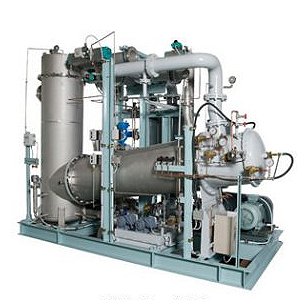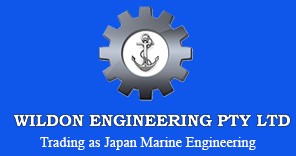Mitsubishi VOS Ballast Water Treatment System: Applications, Purposes, and Functions
Blog | January 31st, 2017

Before we describe the Mitsubishi VOS ballast water treatment system, let’s learn a little about marine vessel stabilization. During our discourse, we’ll mention hull compartments, water intake valves, and ship trim. We’ll then understand the reasons for water conditioning measures and know where the Mitsubishi treatment solution fits into this environmentally conscious design ethic. Beginning with the basics, why do these compartments occupy large sections of an ocean-going ship’s hull?
What is Ship Ballast?
We climb down into the bowels of the ship to discover the ballast compartments. They’re filled with water, a readily available resource, that pulls the vessel down into the water so that its center of gravity is maintained at a safe level. Ship stabilization, trim and buoyancy considerations are regulated here, with compartment valves raising and lowering the ship in response to freight loading factors and conditions on the open seas.
Functions of The VOS Ballast Water Treatment System
A Venturi Oxygen Stripping mechanism conditions the ballast water so that foreign contaminants aren’t allowed to become unwanted global passengers. The Mitsubishi-designed equipment cleans and conditions the brackish fluid so that no invasive sea life can use the compartments as a conveyance medium. In essence, the estuarine and plankton-loaded water is deoxygenated. Then, without this life-sustaining support system, the invasive organisms are rendered inert.
Venturi Oxygen Stripping: An Overview
Discharge standards are maximized by combining a stripping gas generator and a venturi injector. Several pumps and discharge valves then regulate flow characteristics and maintain the deoxygenation cycle, at which point the return channel delivers a fully treated fluid medium that’s stripped of its life-sustaining qualities. One remarkable upshot of this design is the elimination of a chemical treatment methodology, which means no harsh discharges, just an organism free ballast dump. Interestingly, this inert gas generation method also incorporates a ship protection feature, for the technology acts as an anti-corrosion solution. Remember, there’s no oxygen allowed here, so the oxidization of metallic compartment parts is happily mitigated.
In the battle against invasive environmental species, the Mitsubishi VOS Ballast Water Treatment system plays a vital role. Water ballast is still sourced from different regions of our globe, but the ballast compartments will never allow these seaborne hitchhikers free passage, not when they’re swimming in oxygen-less water. Destructive invaders are ousted because of this ballast protection system. Meanwhile, mechanism oxidization is also kicked to the curb because there’s no oxygen for the corrosion to feed upon.
Optimized by NetwizardSEO.com.au
Recent Posts
- Turbochargers Supply from Japan Marine: Wildon Engineering’s Excellence in Global Shipping
- Mitsubishi VOS Ballast Water Treatment System: Next-Generation Marine Environmental Solutions
- Yanmar Marine Compressors: Reliable Power Systems for Commercial Vessels
- Water-Lubricated Stern Tube Bearings Explained: How EVR Technology Supports Marine Propulsion
- YANMAR Auxiliary Generator Engine Parts for Commercial Vessels
- Fluid Control Systems: Innovations in Marine Applications
- Yanmar Diesel Generators Australian Distributor: Power for Shipping & Marine Operations
- Navigation & Communication Equipment: Essential Tools for Safe Voyages
- Stern Tube Seals: Preventing Leaks & Maintaining Vessel Integrity
- Innovative Cathodic Protection Technologies for Maritime Industries
